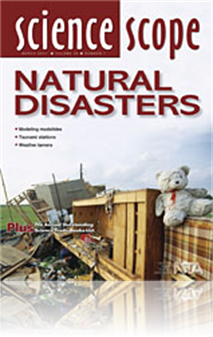All Science Scope resources
Journal Article
Fires, Floods, & Hurricanes: Is ENSO to Blame?
Scientists have associated the El Niño/Southern Oscillation (ENSO) phenomenon with extreme climate events such as flooding in California, droughts in Australia, fires in Indonesia, and increased hurricane activity in the Atlantic Ocean. Because most...
Journal Article
Tech Trek: In the eye of all beholders
Save for the subject of art perhaps, the teaching of no other discipline in K-12 schools is more reliant on vision than science. In fact, the core of science study involves observation in a controlled environment and the use of labs for observing nat...
Journal Article
Science Sampler: Connecte2d Teaching—A comprehensive resource for teaching science using earthquakes
The Connecte2d Technology website is an all-inclusive web resource linking the study of earthquakes and engineering design to middle school science, mathematics, and technology. Through the use of interdisciplinary activities and hands-on projects, s...
Journal Article
Outstanding Science Trade Books for Students K—12: Books Published in 2006
Apples and oranges … and lychees and loquats—how can one compare? That’s the challenge when a team of NSTA’s best science educators attempt to select the best of each year’s science trade books. It’s been 34 years since NSTA joined forces...
Journal Article
Scope on the Skies: Total lunar eclipse
On March 3, 2007, the Moon will be at its descending node, crossing the Earth’s orbital plane, moving southward. The Moon will also be at 100% illumination, or at full Moon, during the node crossing. These are the requirements for a lunar eclipse t...
Journal Article
Science Sampler: Earthweek in the classroom—Students monitoring a dynamic planet
Exploding frogs in Germany, new volcanic islands emerging in the Pacific Ocean, Avian Influenza spreading worldwide—these are just a few of the stories in Earthweek, an online log of natural events. The weekly report chronicles events around the w...
Journal Article
Science Sampler: Students learn best by teaching
Traditionally, science fair projects allow students to share their personal investigations about nature. In a science fair presentation, a student typically lectures, pointing out observations, data, analysis, and conclusions to a disinterested audie...
Journal Article
Using Clay Models to Understand Volcanic Mudflows
Gravity is a subtle but ubiquitous force that influences nearly all geologic processes from the formation of ores to the flow of glaciers and rivers. Gravity also determines the path some materials take as they flow down volcanoes. Lava flows, mudflo...


